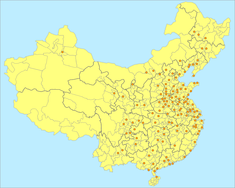
Every 1M+ Chinese City #2
Last updated: Friday March 24th, 2023
Report this blog
In the previous blog I went through 16 of the 132 Chinese cities with over a million people. I will continue with another 16 in this blog.
Qinhuangdao
Name
Simplified Chinese: 秦皇岛
Traditional Chinese: 秦皇島
Pronunciation
Mandarin pinyin: qín huáng dǎo
Cantonese jyutping: ceon4 wong4 dou2
Population
citypopulation.de: 1,630,000
census 2020 (metro): 1,881,047
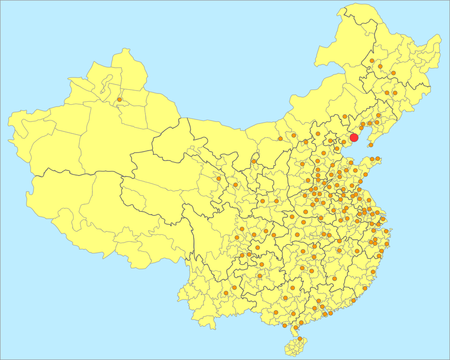
Qinhuangdao (literally the "Qin emperor island") is a popular seaside resort town for the residents of Beijing and Tianjin, something like Brighton to London and the Hamptons to New York. The Shanhai Pass of the Great Wall and Beidaihe, the Communist Party's summer retreat similar to Camp David, are located nearby.

Tangshan
Name
Simplified Chinese: 唐山
Traditional Chinese: 唐山
Pronunciation
Mandarin pinyin: táng shān
Cantonese jyutping: tong4 saan1
Population
citypopulation.de: 2,650,000
census 2020 (metro): 3,687,607
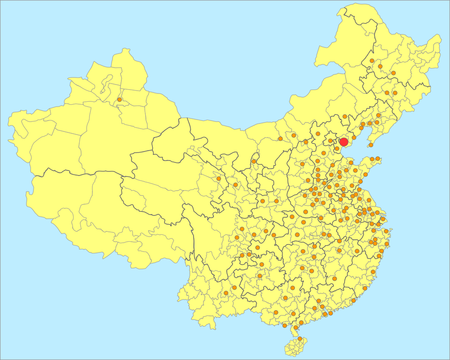
Tangshan will forever be remembered for the devastating earthquake of 1976, in which 300,000 people lost their lives.
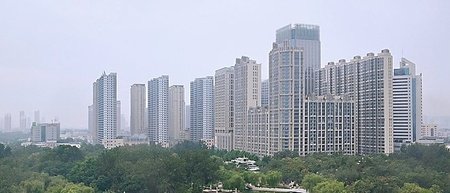
Tianjin
Name
Simplified Chinese: 天津
Traditional Chinese: 天津
Pronunciation
Mandarin pinyin: tiān jīn
Cantonese jyutping: tin1 zeon1
Population
citypopulation.de: 11,400,000
census 2020 (metro): 11,165,706
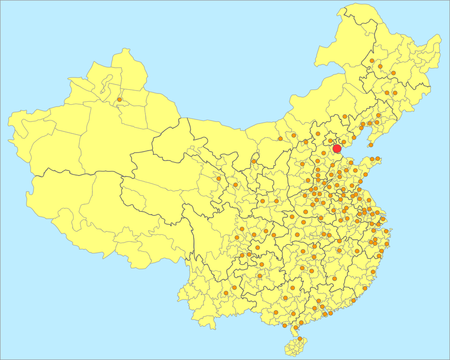
Tianjin is one of the four municipalities under direct central government rule. It serves as the gateway to the capital Beijing. Since the Second Opium War, foreign countries set up concession territories within the city. It developed into one of the most important commercial centres and the base for the Westernisation Movement in the 19th century.
Today, Tianjin is a megapolis with over 10 million people. Beside its CBD, Binhai New Area, located on the coast of Bohai Sea, is a new CBD being developed to replicate the success of Shenzhen and Pudong in Shanghai. It was where the massive explosion occurred in 2015.
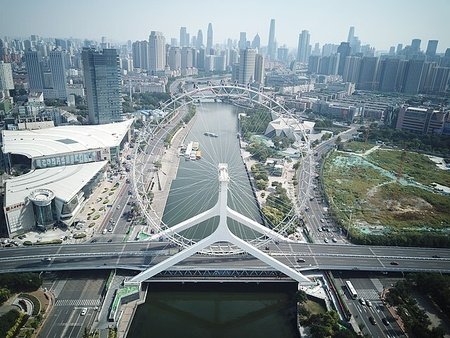
Beijing
Name
Simplified Chinese: 北京
Traditional Chinese: 北京
Pronunciation
Mandarin pinyin: běi jīng
Cantonese jyutping: bak1 ging1
Population
citypopulation.de: 20,900,000
census 2020 (metro): 22,366,547
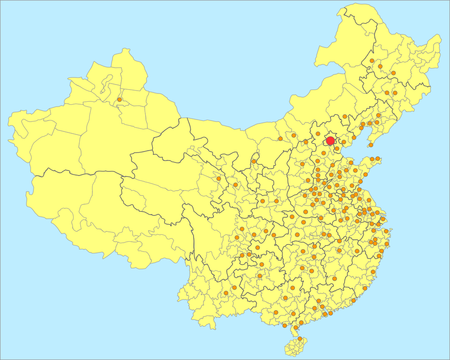
Beijing, the capital of China, does not need much introduction. The Forbidden City, the Great Wall, Temple of Heaven, Tiananmen Square, the Bird's Nest Stadium are all located here. The top two universities in China (Peking and Tsinghua) are here, as well as many large corporate headquarters. It is the only city that hosted both Summer and Winter Olympics. The "Northern Capital" is the centre of power in China.
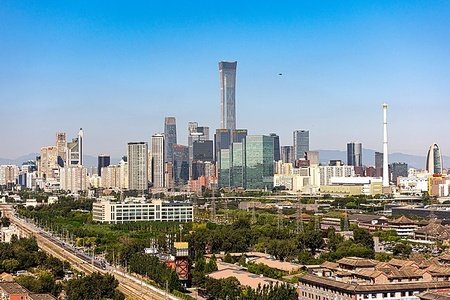
Zhangjiakou
Name
Simplified Chinese: 张家口
Traditional Chinese: 張家口
Pronunciation
Mandarin pinyin: zhāng jiā kǒu
Cantonese jyutping: zeong1 gaa1 hau2
Population
citypopulation.de: 1,400,000
census 2020 (metro): 1,339,384
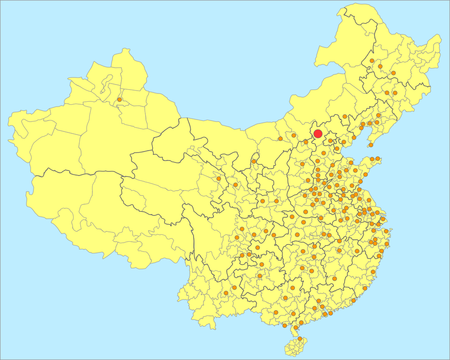
Zhangjiakou is the northern gateway to Beijing, connecting it to Mongolia. It used to be a military stronghold defending the country. With its mountain slope nearby, it was the co-host of the Beijing 2022 Winter Olympics.
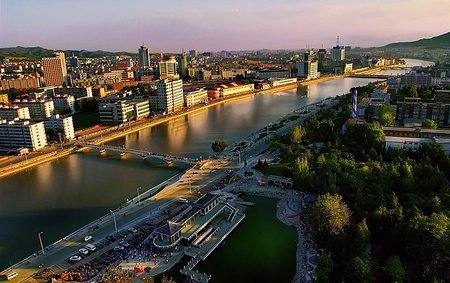
Baoding
Name
Simplified Chinese: 保定
Traditional Chinese: 保定
Pronunciation
Mandarin pinyin: bǎo dìng
Cantonese jyutping: bou2 ding6
Population
citypopulation.de: 2,075,000
census 2020 (metro): 1,940,384
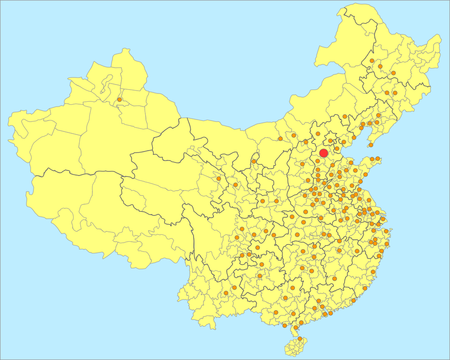
Baoding was once the capital of Zhili and later Hebei province. Xiong'an New Area, the government's "millennium strategy" to build a new city to alleviate overcrowding of Beijing and Tianjin, is located in the east within its administrative boundary, but it is now under the direct oversight of the central government.
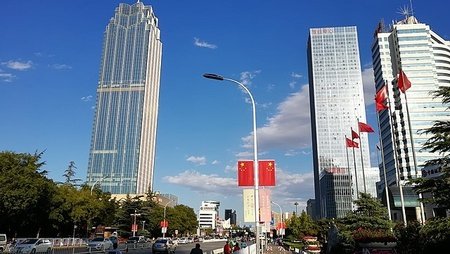
Shijiazhuang
Name
Simplified Chinese: 石家庄
Traditional Chinese: 石家莊
Pronunciation
Mandarin pinyin: shí jiā zhuāng
Cantonese jyutping: sek6 gaa1 zong1
Population
citypopulation.de: 6,000,000
census 2020 (metro): 6,230,709
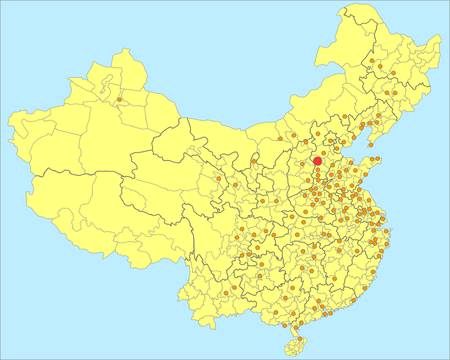
Shijiazhuang, the capital of Hebei, is a lesser-known provincial capital in China. Since Beijing and Tianjin were carved out of Hebei, what remained are second-tier cities like this one. It only became a large city after the railway was built, and the provincial capital relocated to here due to the chaos in Baoding during the Cultural Revolution.
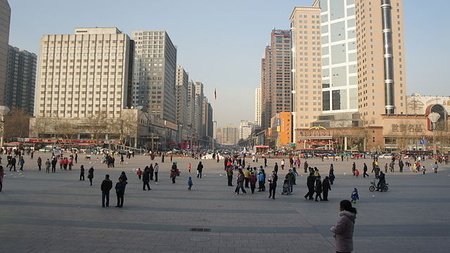
Xingtai
Name
Simplified Chinese: 邢台
Traditional Chinese: 邢臺
Pronunciation
Mandarin pinyin: xíng tái
Cantonese jyutping: jing4 toi4
Population
citypopulation.de: 1,590,000
census 2020 (metro): 971,300

Xingtai is an ancient city and appears in various stages in Chinese history textbooks. But other than that, it is a relatively small city in China.
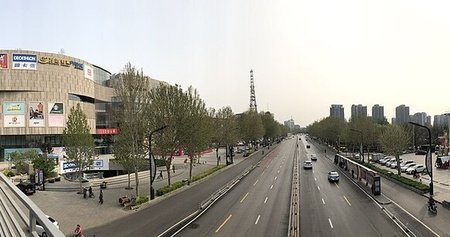
Handan
Name
Simplified Chinese: 邯郸
Traditional Chinese: 邯鄲
Pronunciation
Mandarin pinyin: hán dān
Cantonese jyutping: hon4 daan1
Population
citypopulation.de: 2,750,000
census 2020 (metro): 2,845,790
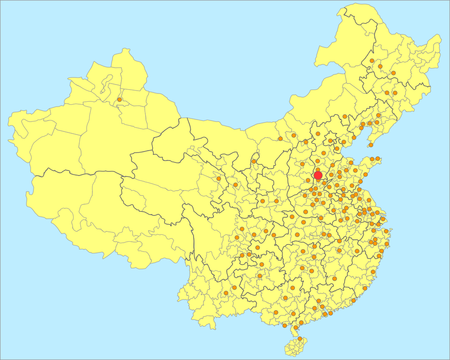
Handan is another historical city. It was the capital of Zhao during the Warring States period in the 5th century BC. The two characters in its name are specifically used for this city only. The uneducated ones would probably mispronounced 邯 (hán) as 甘 (gān).
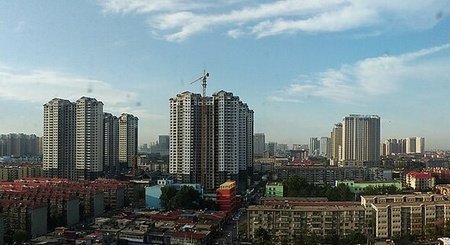
Datong
Name
Simplified Chinese: 大同
Traditional Chinese: 大同
Pronunciation
Mandarin pinyin: dà tóng
Cantonese jyutping: daai6 tung4
Population
citypopulation.de: 1,900,000
census 2020 (metro): 1,790,542
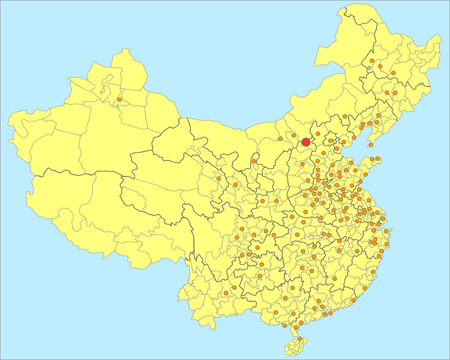
Datong is the second largest city in Shanxi. It has a long history and was the capital of Northern Wei in the 5th century. It has many historical sites and relics, such as the Yungang Grottoes which is an UNESCO World Heritage Site.
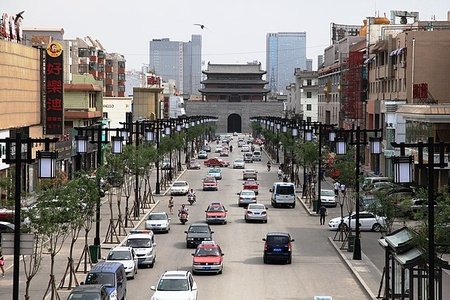
Taiyuan
Name
Simplified Chinese: 太原
Traditional Chinese: 太原
Pronunciation
Mandarin pinyin: tài yuán
Cantonese jyutping: taai3 jyun4
Population
citypopulation.de: 5,750,000
census 2020 (metro): 5,433,659
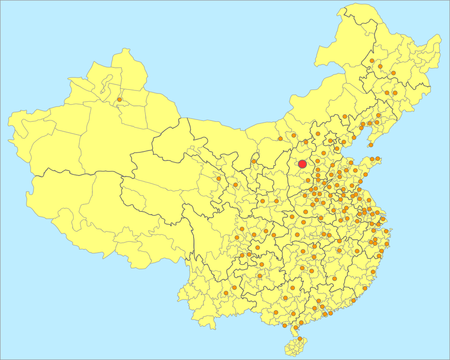
Taiyuan is the capital and largest city in Shanxi. It was the founding city of the Tang dynasty in the 7th century. Back then, it was the third largest city after Chang'an and Luoyang.
It suffered from severe air pollution in the 90s due to its reliance on coal burning heavy industries. The situation is now slowly improving, but poor air quality still hampers the city's reputation.
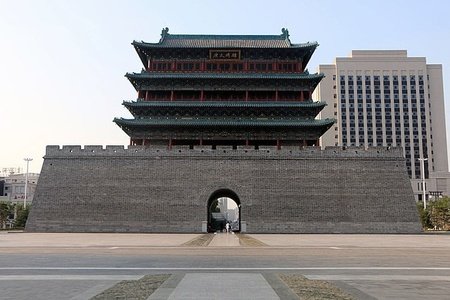
Changzhi
Name
Simplified Chinese: 长治
Traditional Chinese: 長治
Pronunciation
Mandarin pinyin: cháng zhì
Cantonese jyutping: coeng4 zi6
Population
citypopulation.de: 1,200,000
census 2020 (metro): 1,214,940
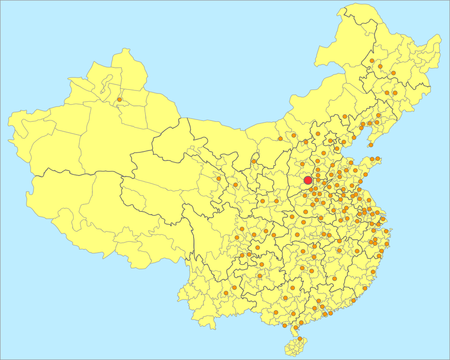
Changzhi is a medium-size city in southeast Shanxi, probably not familiar to anyone outside the province. I did a bit of research on the city, but there is really nothing significant worth writing about.
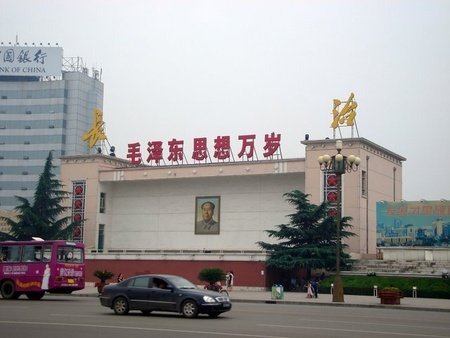
Xi'an
Name
Simplified Chinese: 西安
Traditional Chinese: 西安
Pronunciation
Mandarin pinyin: xī ān
Cantonese jyutping: sai1 on1
Population
citypopulation.de: 12,300,000
census 2020 (metro): 12,283,922
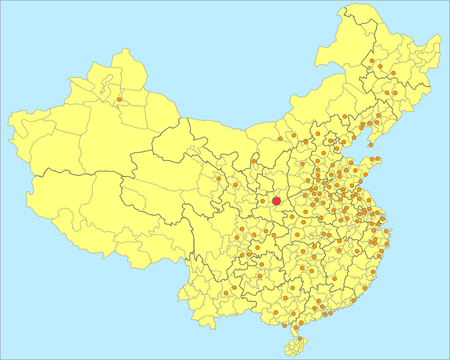
Xi'an, literally means "western peace", is the capital of Shaanxi. It is one of the most important cities in Chinese history, being the capital since the 11th century BC for over a thousand years. It was the start of the ancient Silk Road. Historically, it was a cosmopolitan city, a gateway where foreign traders brought in their goods, culture and religions (Buddhism, Islam and Christianity). The city was at its peak during the Tang dynasty in the 7th and 8th centuries, when it reached a population of over a million people.
Today, Xi'an remains the largest city and the economic centre to Northwest China, and a key city to the Belt and Road Initiative. The city wall, bell tower and drum tower are some of the oldest and best preserved in China. The Mausoleum of the First Qin Emperor and the Terracotta Warriors attract tourists from all over the world, making Xi'an one of the better known Chinese cities to foreigners.
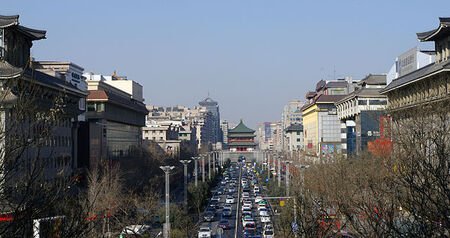
Baoji
Name
Simplified Chinese: 宝鸡
Traditional Chinese: 寶雞
Pronunciation
Mandarin pinyin: bǎo jī
Cantonese jyutping: bou2 gai1
Population
citypopulation.de: 1,170,000
census 2020 (metro): 1,475,962
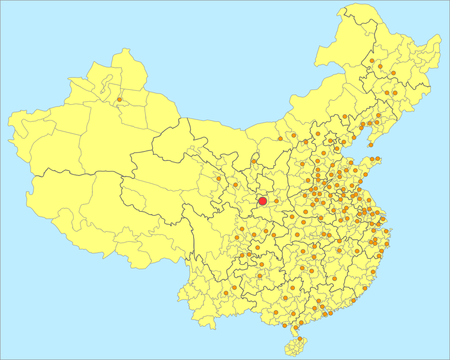
Baoji (literally "treasure rooster") is surrounded by mountains. Originally called Chencang, it was a choke point connecting Xi'an, and was contested by many armies. The Chinese idiom "sneak through the passage of Chencang" refers to this city.
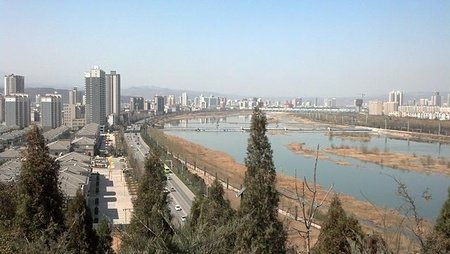
Lanzhou
Name
Simplified Chinese: 兰州
Traditional Chinese: 蘭州
Pronunciation
Mandarin pinyin: lán zhōu
Cantonese jyutping: laan4 zau1
Population
citypopulation.de: 3,400,000
census 2020 (metro): 3,042,863

Lanzhou is the capital of Gansu, a key city on the Silk Road. Most people could only associate this city with its famous beef noodle soup though.
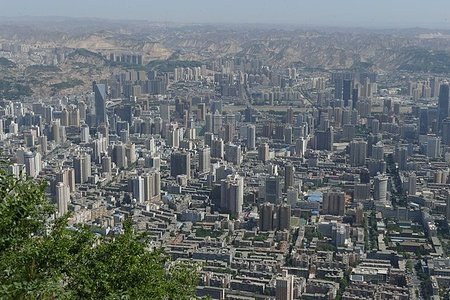
Xining
Name
Simplified Chinese: 西宁
Traditional Chinese: 西寧
Pronunciation
Mandarin pinyin: xī níng
Cantonese jyutping: sai1 ning4
Population
citypopulation.de: 2,100,000
census 2020 (metro): 1,954,795
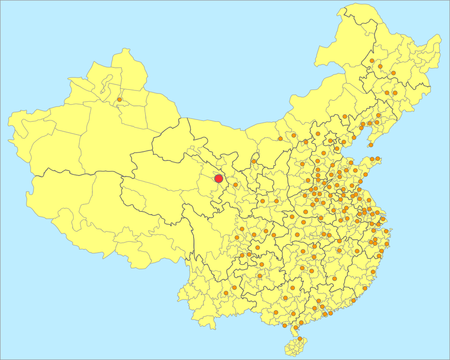
Xining, literally means "western tranquillity", is the capital of Qinghai and the largest city on the Tibetan Plateau. It is the start of the Qinghai-Tibet Railway, the world's highest railway.
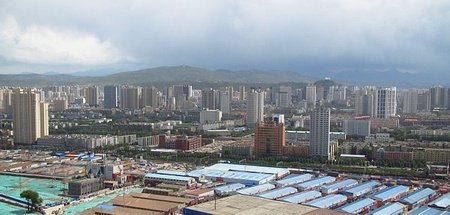
This concludes the second blog. So far I have gone through 32 cities in Northern China. In the next blog I will move on to Eastern China. Thank you for reading.

Is that a Ferris Wheel on a bridge that has a major road either side of it in Tianjin?